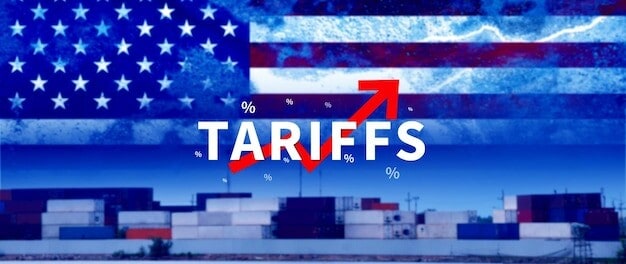
Estimated reading time: 6 minutes
Key Takeaways
- 3 September marks National Merchant Navy Day, honouring merchant seafarers past and present.
- Our local council will lead Red Ensign flag-raising ceremonies to spotlight maritime heritage.
- The merchant navy handles over 95% of UK trade, keeping supermarket shelves and industry supplied.
- Community events aim to tackle “sea blindness” by reconnecting residents with life at sea.
- Interactive exhibits, wreath-laying services, and family activities invite everyone to participate.
Table of Contents
Introduction
As the Red Ensign rises against the September sky, it waves more than fabric – it waves gratitude. This vibrant flag signals a united salute to the merchant navy whose ships have carried Britain’s fortunes in war and peace alike.
Locally, council leaders have curated a packed programme to ensure the day resonates: solemn ceremonies, interactive exhibits, and family-friendly storytelling sessions designed to put a human face on maritime service.
Significance of National Merchant Navy Day
- Historical Roots: The day traces back to the tragic torpedoing of SS Athenia on 3 September 1939, the first British merchant ship lost in WWII.
- Evolution: From 17th-century spice routes to today’s container mega-ships, merchant vessels have underpinned Britain’s prosperity.
- Symbol of Respect: Adopted in 1864, the Red Ensign remains a bold badge of honour fluttering on commercial sterns worldwide.
- Modern Importance: According to UK Chamber of Shipping, over 95% of our imports and exports still move by sea.
Council’s Commemoration Efforts
Red Ensign Flag-Raising Ceremonies
The headline moment will unfold at Town Hall Square at 10 a.m. when veterans unfurl the Red Ensign to a haunting boatswain’s whistle. *“It’s a privilege to honour shipmates who never came home,”* shares retired radio officer Clive Dunbar.
Accompanying activities include:
- Multi-faith remembrance led by local clergy
- Wreath-laying at the seafarers’ memorial
- Poppy-themed art installation created by schoolchildren
Dignitaries such as port authority chiefs, Royal Navy reservists, and maritime charity representatives will be in attendance, underscoring the event’s cross-sector support.
Role of the Merchant Navy in Global Trade
- Economic Engine: Merchant vessels transport energy, food, and consumer goods – an invisible conveyor belt beneath the waves.
- Logistics: Crews navigate labyrinthine shipping lanes while meeting stringent International Maritime Organization safety rules.
- Challenges: Long voyages, fierce storms, and piracy hotspots test resolve daily.
- COVID-19 Response: When airports closed, seafarers kept supply chains afloat, sometimes spending *months* longer onboard than contracts allowed.
Remembrance & Honouring Heritage
“My grandfather rarely spoke of convoy duty,” recalls local resident Sarah Thompson, *“but the pride in his eyes when he saw the Red Ensign said everything.”*
- World War convoys braved U-boats to supply the front – 32,000 merchant seafarers never returned.
- Maritime museums curate artefacts, while oral-history projects capture veterans’ voices for posterity.
- School programmes bring history alive with model-ship workshops and virtual reality bridge tours.
Addressing Sea Blindness
Despite living on an island, many of us never glimpse the engines of commerce churning beyond the horizon. This disconnect – dubbed “sea blindness” – threatens support for maritime policy and infrastructure.
The council’s antidote:
- Pop-up exhibitions showcasing ship technology
- Primary-school visits by serving deck officers
- Social-media spotlights featuring #MerchantNavyDay facts
Impact on the Local Community
- Economic Boost: Port activity sustains jobs in logistics, engineering, and hospitality.
- Cultural Fabric: Annual sea shanty festivals and ship-watching clubs nurture a proud maritime identity.
- Voices from the Quayside: “Our family chandlery has supplied ships for three generations – it’s more than business, it’s community,” says John Baker.
Conclusion
On 3 September, pause beneath the fluttering Red Ensign. Whether you attend the ceremony, share an old sea tale, or simply look seaward, your gesture joins a nationwide chorus of thanks. Together we can ensure the courage, skill, and sacrifice of merchant seafarers remain etched in the public conscience – not just on Merchant Navy Day, but every day ships anchor our way of life.
FAQs
What is the purpose of National Merchant Navy Day?
The day honours merchant seafarers’ historical and ongoing contribution to UK security and prosperity, symbolised by flying the Red Ensign.
Where can I watch the local flag-raising ceremony?
The main ceremony will take place at Town Hall Square at 10 a.m., with additional events at the harbour master’s office and Maritime Gardens.
How can schools get involved?
Schools can book free interactive sessions via the council’s education portal, including VR bridge tours and talks by serving officers.
Why is the Red Ensign used instead of another flag?
Since 1864, the Red Ensign has identified UK-registered merchant ships, making it the natural emblem for merchant navy recognition.
Is there a way to support merchant seafarers year-round?
Yes – consider donating to charities like Seafarers UK, writing to MPs about seafarer welfare, or attending maritime heritage events throughout the year.

